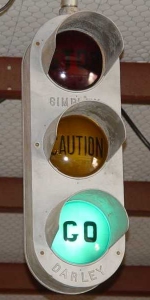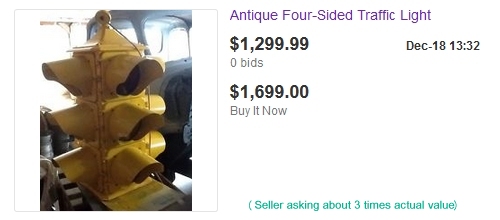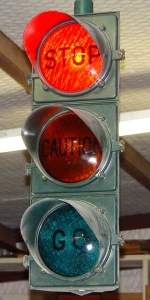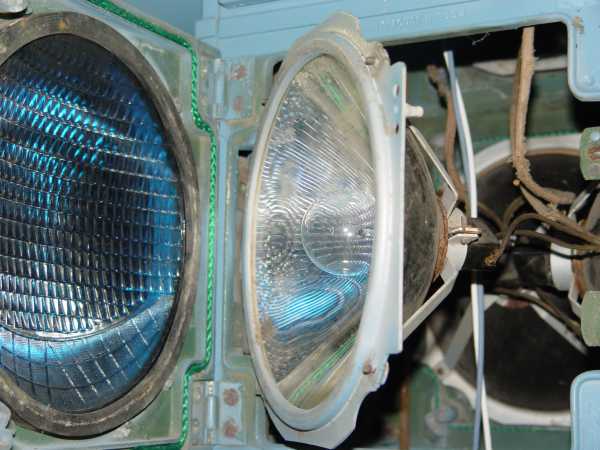Tips on Buying and Selling Traffic Signals
|
|

|
|
The type of signal being considered certainly affects value. A fixed 4-way signal is typically valued higher than single face signals or adjustable signal clusters. Restorable or working signals having flags or signs that move in conjunction with illuminated indications can be very valuable. Signals having extra features such as art-deco fins, down lights, "Presto Brite" sign boxes and other less common features can add to value.
So how do you as a potential collector or a seller know what is a fair price? Compare before you bid or buy. Signals for sale can be found on auction sites such as eBay and they also show up on places such as Craig's List. eBay has a section called "Traffic Lights and Signals." There are hundreds of listings with prices spread all over the map. Some sellers are asking ten times or more than the value of items listed, so establish a fair value based on items that are actually receiving bids. Read the description carefully. Once you have a sense of the value of what you are looking for, read the listings carefully to determine what you are actually getting. Has a piece sustained significant damage that would be expensive to repair? Are the visors present or would finding replacements add to your overall costs? Are the reflectors present and intact? Glass reflectors can discolor over time and can suffer minor stress cracks, but the big issue involves reflectors for which large chunks are missing or are absent altogether. Are the lenses original to the signal or have they been broken and non-original lenses replaced them? Get as many views of the signal as possible. Ask the seller for additional views if the ones posted don't show all sides of the signal, show the signal with doors open to verify the condition of internal components, and show the lenses. While it may not seem significant, having original lenses in a signal is important to preserving its originality. While replacement lenses can be found, costs can range from around $15.00 to over $100.00 each, depending on rarity, so having those original lenses can affect final restoration costs. Also with some manufacturers, various vintages of signals may appear identical on the outside, but clues to their actual ages can be found by looking at the interior components.
Knowing what is inside is important.
|


